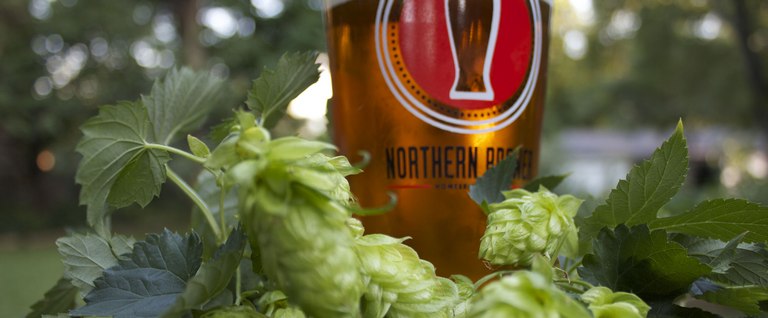Sponsored Guest Post by Northern Brewer:
Craft brewers, and homebrewers alike, throw around the term “dry hopping” to describe their beers. But what is it? If the consumer of the beer doesn’t know what this term refers to, how are they supposed to appreciate the quality it presents in the finished product? Here’s a little primer on what it is, and how to do it yourself:
Dry hopping is used to extract the essential oils from hops, which contribute a concentrated fresh aroma to the beer. This is often done during secondary fermentation, as active primary fermentation can scrub out or off gas delicate aroma compounds. Hops that work well for dry hopping are usually low in alpha acid and high in essential oil, but there are also some dual purpose hops that are excellent despite their higher alpha acid content.
Dry hopping can be done with either whole leaf or pellet hops. When using pellet hops, a fine mesh straining bag will help reduce the amount of hops in your finished beer. The amounts used in a 5 gallon batch can vary but a general rule of thumb for an average amount of aroma is one ounce in 5 gallons of average strength beer for 10-14 days at 60°F-70°F. For more hop aroma or in higher gravity beers, you can use up to 4-5oz in 5 gallons or even more if you would like to push the boundaries of hop aroma. If you are dry hopping at lower temperatures (40°-50°F) it may take 3-4 weeks to extract the essential oils from the hops. These are general suggestions on dry hopping times. Your nose and taste buds should be the final judge as to when to remove the hops from the beer.
When adding dry hops to your beer there is no need to sanitize them. The alcohol in the beer will help keep potential contamination to a minimum and hops are naturally anti-microbial and are an unlikely host for contaminants such as bacteria. If you are using a straining bag, this can be boiled prior to use to sanitize.
Some equipment to use:




Dry hop 10-14 days if you like grassy/vegetal aromas.
“These are general suggestions on dry hopping times, your nose and taste buds should be the final judge as to when to remove the beer from the hops.”
Its a good thing we don’t actually have to read the article, eh?
Good catch!
Pingback: Dry Hopping and You | The best [Beer Blog] you've ever seen.